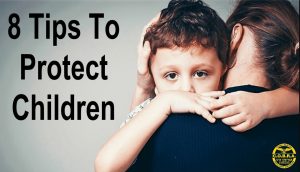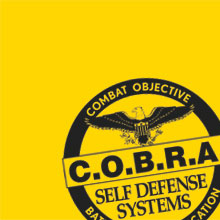
The world is reeling after school shooting in Uvalde, Texas. The shooting is almost unspeakable, and we can only begin to imagine the anguish of the families, the authorities and the town’s residents. The heartbreak we, parents here in Texas and around the world, feel for the innocent little victims is beyond description
Shooting violence in schools account for less than 1% of deaths of school-aged youth. However, 70% of parents are at least somewhat concerned about the risk their child faces from school shootings with more than one-third of parents reporting being very concerned about the prospect.
No place in the world can assume 100% safety. and the Uvalde shooting has very legitimately raised alarm and concern among parents over the safety of children in violent emergency situations like an active shooter in a school or public place.
As with all areas of danger in life, we must empower our children with knowledge and skills to respond appropriately. Practicing lock-down and shooter drills, for example, have the potential to empower individuals and save lives, but without proper caution, they can risk causing harm to participants.
So what should you do? How can you empower your child to defend themself against an armed intruder? Here are our top 8 tips on how you can help to keep your child safe in violent emergency situations.
1. Talk to Children About Violence-Based Emergencies
This is particularly important if your child has learned about a recent emergency situation like the school shooting in Uvalde. Talk about violence-based emergencies generally and in an age-appropriate way allowing for children to express their concerns or ask questions. Refrain from sharing graphic details, but use the opportunity to talk through any concerns that your child may have.
First, listen carefully to your children, reassure them and be honest. Never lie to children. Address any inaccurate concerns that they may have (e.g., school shootings happen frequently; children are not safe at school). Focus on safety, helping children recognize the plans that are in place to protect them in all types of emergency situations.
2. Teach Children Response Options
There may be a few ways to respond to an intruder based on where the intruder or danger is located. Make sure that the response options below (Get Out, Stay Out, Hide Out) are presented as choices and not expectations.
- Get Out: If it is possible to get away from danger, go to a safe place. Teachers, leaders and first responders will come to find you in your meeting place or another place.
- Keep Out: If it is not possible to get out of the building or out of harm’s way, keep danger out of the room by locking and blocking doors and staying away from windows.
- Hide Out: Stay out of sight from danger by hiding behind or large pieces of furniture. Try to stay as quiet so we know can know if we need to get out or when the danger has passed.
3. It’s Normal to Be Scared
Everyone feels afraid when they are in danger. Fear is how our bodies alert us and prepare us for action in times of danger. Help children understand that their natural reactions to danger (e.g., freeze or flight) are normal and these choices are not wrong or inadequate.
4. Follow the Leader
Teach children that there are adults like teachers, leaders and first responders that will be working to keep them safe. It’s important to stay quiet and listen to teachers and for directions.
5. It’s Okay to Break the Rules
Sometimes children may be separated from their leader or teacher. In the absence of an adult, kids may have to make safety choices on their own. Let children know that no one will be angry at them for breaking rules (like throwing things, entering staff-only areas, or running in the hall) to be safe.
6. Practice Makes Progress
By practicing different response options children are more likely to have confidence to make a safe decision in an actual emergency situation. Practice lock-down and shooter drills that are developed and implemented by a multidisciplinary safety team and informed by mental health professional. Make sure the complexity of the drills and how they are communicated are age appropriate.
7. Increase Drill Complexity as Children Develop
Participation in drills should be appropriate to individual development levels and take into consideration prior traumatic experiences special needs and personalities. As children mature, they can handle more information and more complex drills.
8. Be Reassuring
Children model their reactions on adult behavior so effective drills should result in staff who inspire calm and confidence in children. Remind children that there are caring adults who will be working to keep them safe in all types of emergency situations.
I hope this information is useful and valuable to you and your family, but having said that, I hope you’ll never need to use it!
If you reside on the Dallas-Forth Worth area and would like your children or the whole family to learn valuable lessons like this, CONTACT ME TODAY to learn how to book an In-Home Training session.
Because one lost child is one too many.

